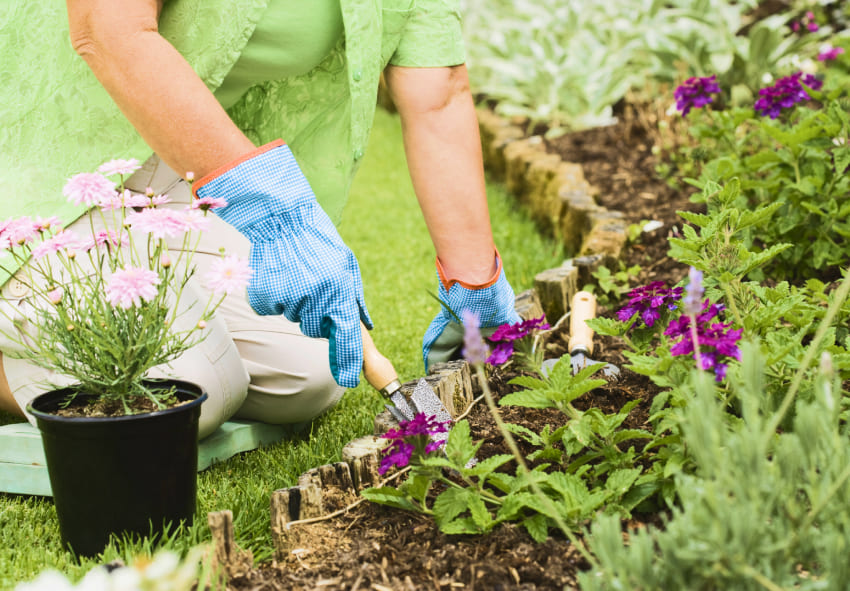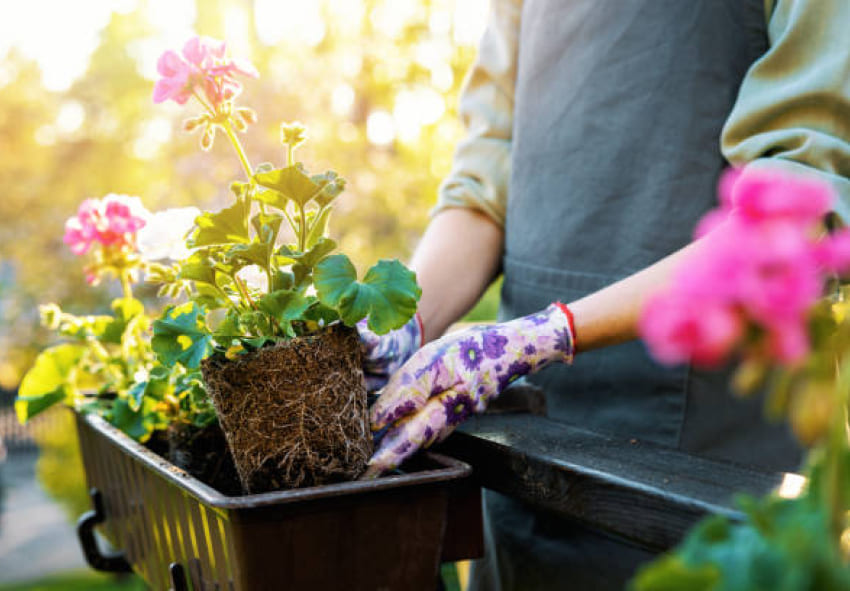Geraniums are beloved for their vibrant blooms and versatility in the garden. Their popularity stems from their ability to thrive in various conditions, adding color and charm to any landscape. To ensure these plants grow healthy and robust, it’s crucial to understand the best practices for planting, including timing and techniques. This guide will provide you with essential tips on when and how to plant geraniums for optimal results. Our gardening blog is a perfect place to find all the information you need!
When to Plant Geraniums

Knowing the right time to plant geraniums is crucial for their successful growth. This section covers the best times of the year to plant different varieties, taking into account climate considerations and hardiness zones to ensure your geraniums thrive.
Best Time of Year
The optimal time to plant geraniums varies depending on the specific variety and your local climate. Generally, spring is the best season to start planting, as it allows geraniums to establish themselves before the summer heat. In cooler climates, wait until after the last frost to avoid any risk of cold damage. Geraniums are hardy in USDA zones 3-11, but understanding your local hardiness zone will help you determine the precise planting window.
Preparing for Planting
Before planting, prepare the soil to ensure it is well-draining and rich in organic matter. Amend the soil with compost or well-rotted manure to improve its texture and fertility. Select a site that receives full sunlight, as geraniums flourish in bright, direct light. Ensure the area has adequate air circulation to prevent fungal diseases. Proper preparation sets the stage for healthy plant growth and vibrant blooms.
How to Plant Geraniums
Proper planting techniques are essential for establishing healthy geraniums. Here, we provide detailed instructions for planting geranium seeds and transplanting seedlings, ensuring your plants get the best start possible.
Planting Geranium Seeds
Sowing geranium seeds requires a bit of patience and attention to detail. Follow these tips:
- Gather Supplies: Obtain high-quality geranium seeds, seed-starting mix, seed trays or small pots, and a clear plastic cover or plastic wrap.
- Prepare Seed Trays: Fill seed trays or pots with seed-starting mix, ensuring it is moist but not waterlogged.
- Sow Seeds: Scatter the seeds evenly on the surface of the soil mix. Lightly press them into the soil without covering them, as geranium seeds need light to germinate.
- Cover and Maintain Humidity: Cover the trays with a clear plastic cover or plastic wrap to retain humidity and warmth, essential for germination.
- Provide Light: Place the covered trays in a warm, bright location, ideally with 14-16 hours of light per day. A grow light can be used if natural light is insufficient.
- Monitor and Water: Keep the soil consistently moist but not soggy. Water gently to avoid disturbing the seeds.
Transplanting Geranium Seedlings

When transplanting nursery-grown geranium seedlings, choose a cloudy day or early evening to reduce transplant shock. Dig holes in your prepared garden bed, spacing them according to the variety’s mature size. Gently remove the seedlings from their pots and place them into the holes, ensuring that the top of the root ball is level with the surrounding soil. Firm the soil around the base and water thoroughly. This will help establish the plants and encourage strong growth.
Different Planting Methods
Geraniums can be planted using various methods, each with its own advantages. This section explores direct seeding, using seedlings or nursery plants, and container planting, helping you choose the best approach for your gardening needs. You can find more information about different planting methods in our full guide for geranium.
Direct Seeding
Direct seeding involves planting geranium seeds directly into the garden bed where they will grow. This method is straightforward but requires careful timing to ensure seeds are sown after the last frost. The main advantage is that it eliminates the need for transplanting, which can reduce the risk of transplant shock. However, direct seeding may result in lower germination rates and slower initial growth compared to starting seeds indoors.
Using Seedlings or Nursery Plants
Using established seedlings or nursery plants offers a head start, as these plants are already several weeks old and have a developed root system. This method increases the chances of robust growth and earlier blooming. To transplant, dig a hole in the garden bed, gently remove the plant from its container, and place it into the hole. Fill in with soil, firm it around the base, and water thoroughly. This approach is ideal for gardeners who want immediate results and a quicker, more reliable start to their garden.
Container Planting

Growing geraniums in containers provides flexibility and mobility, allowing you to move the plants to optimize light exposure or protect them from adverse weather. Here are some growing tips for you:
- Choose the Right Container: Select containers with adequate drainage holes to prevent waterlogging. Consider the size of the geranium variety to ensure the pot is spacious enough for root growth.
- Select Appropriate Soil: Use a high-quality potting mix that is well-draining. You can mix in perlite or sand to improve drainage.
- Planting Geraniums: Fill the container with the potting mix, leaving about an inch from the top. Create a small hole in the center and place the geranium plant or seedling into the hole. Gently firm the soil around the base of the plant.
- Positioning the Container: Place the container in a location that receives full sun for at least 6-8 hours a day. Geraniums thrive in bright sunlight.
- Watering: Water the geraniums thoroughly after planting, ensuring the soil is moist but not soggy. Allow the soil to dry slightly between watering sessions to avoid root rot.
- Fertilizing: Feed the plants with a balanced, water-soluble fertilizer every 4-6 weeks during the growing season to encourage healthy growth and abundant blooms.
- Pruning and Deadheading: Regularly prune dead or yellowing leaves and deadhead spent flowers to promote continuous blooming and maintain the plant’s shape.
- Winter Care: If you live in a region with cold winters, bring the containers indoors before the first frost. Place them in a cool, well-lit area and reduce watering to allow the plants to rest until spring.
Conclusion
Planting geraniums can be a rewarding endeavor, bringing vibrant color and beauty to your garden. Whether you choose direct seeding, using seedlings, or container planting, each method has its benefits and considerations. By following the best practices for timing and planting techniques, you can ensure healthy growth and abundant blooms. Enjoy the process of cultivating geraniums and the visual appeal they bring to your outdoor space.
Frequently Asked Questions (FAQs) about Planting Geranium
1. What type of soil is ideal for planting geraniums?
Geraniums thrive in well-draining soil that is rich in organic matter. A good potting mix with added perlite or sand for improved drainage is ideal for container planting.
2. How often should I water newly planted geraniums?
Newly planted geraniums should be watered thoroughly to establish strong roots. After planting, water when the top inch of soil feels dry. Be cautious not to overwater, as geraniums do not like soggy soil.
3. Can I grow geraniums from seeds, and how should I do it?
Yes, you can grow geraniums from seeds. Sow the seeds indoors 8-10 weeks before the last frost date. Use a seed-starting mix, keep the soil moist, and provide plenty of light. Transplant the seedlings outdoors after the danger of frost has passed.
4. Can I order Holland geranium from your online store?
Yes, you can order geraniums from our online store Dutch-bulbs.com. We offer a wide variety of geraniums. We provide detailed information on each variety to help you choose the best one for your garden, and we ship our plants with care to ensure they arrive healthy and ready to thrive.
5. What are the benefits of growing geraniums in containers?
Growing geraniums in containers allows for greater flexibility in placement, easy relocation to optimize sunlight exposure, and better control over soil conditions. Containers also make it easier to bring the plants indoors during winter to protect them from frost.
Published: 30.08.2024
